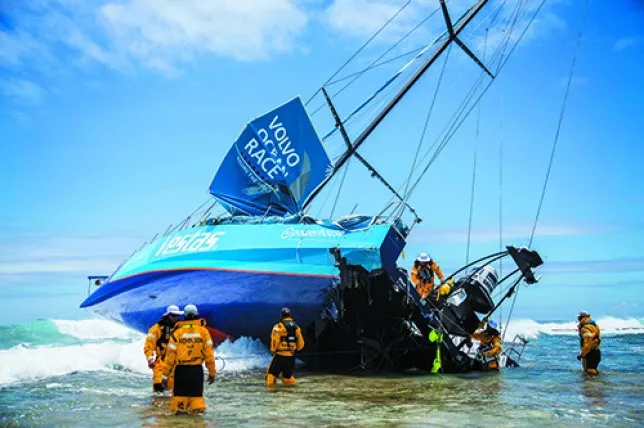The National Oceanic and Atmospheric Administration is seeking public comment on ending production of traditional paper nautical charts. The transition to Electronic Chart Display and Information System (ECDIS) set for 2025 is already underway, but this does not mean the end of backup paper charts, and hopefully not the end of the navigational skills associated with traditional pilotage. Even if you do not intend to make a public comment (see link at bottom), here are just a few cautions regarding digital-only navigation to consider.
Overreliance: Digital-only navigation can foster overreliance on electronics and erode the traditional skills that keep us safe. So long as the world remains unpredictable, traditional
piloting skills and watchkeeping habits will be essential.
Garbage in garbage out: Electronic navigation depends on inputs from onboard sensors that can have faults. The clearest example is a plotter that continues to operate in dead reckoning mode, when GPS data drops out. While most plotters indicate dropped signals with visual or audible alarms, these alarms can be missed or fail to sound. Navigators need charts and traditional skills to cross-check their e-charts, sensors and equipment.
Operator error: Our coverage of Vestas grounding (see PS July 2015) incident is the clearest example of what happens when the navigator misuses the ships navigation system. In that case, the navigator input a route that put the boat on a well-charted reef. The
error would have been obvious if he had been using the right scale or a paper chart during route planning.
Alarm deafness: If an alarm sounds repeatedly, navigators tend to ignore them-or simply deactivate them. Choose the alarms appropriate for the circumstances. Log all alarms and investigate before acknowledging. No alarm should be deactivated without a very good reason.
Evolving skill sets: When you learn to navigate by chart, the skills you developed can be applied to all charts. Although international standards for electronic charting equipment exist, not all equipment conforms to these standards, and there is a wide variation in design. Even skilled navigators must relearn when using new equipment. This is a particularly important consideration for sailors looking to upgrade equipment or switch brands.
Scale errors: Every navigator needs to be aware of errors involving scale. Small hazards can disappear when zoomed out, and looming obstacles on your route are invisible on small scale views. Every digital chart has a scale minimum, and using it below this minimum can lead to big trouble.
Information Overload: Todays chartplotters often combine huge array of data on one screen with overlays, etc. Options such as video inputs that have nothing to do with navigation further complicate the picture.
For more information on NOAAs plans, see its Nov. 15, 2019 press release on its website: https://bit.ly/2sPtBEz.
The PS July 2015 report, Operator Error Strands Vestas Wind, offers a fuller discussion of risks associated with using electronic charts.





































Oh my goodness! Amazing article dude! Many thanks, However I am encountering problems with your RSS.
I don?t know why I am unable to subscribe to it.
Is there anybody getting identical RSS problems? Anybody who
knows the answer can you kindly respond? Thanx!!
What’s up, its nice paragraph about media print, we all
be familiar with media is a fantastic source of data.